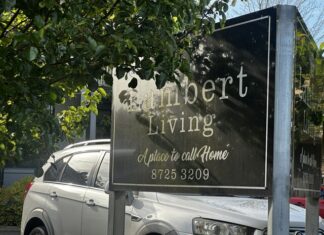LAST week a letter to the editor in this newspaper from Lucy Richards provided an insight into what the sport of tennis meant to the community three decades ago and bemoaned its decline in recent years.
The writer captured the various trends that came and went with tennis and its players during those halcyon days of the 1960s, 70s and 80s.
Anyone who played or followed sport during that time would have identified with Lucy Richards’ letter, particularly over the decline in playing numbers and deterioration of many tennis courts around the city.
In the lead-up to the planned $39.1m recreation hub City Council had been approached to upgrade the Olympic Park tennis courts and when the recreation hub was announced it appeared this would form part of the project.
There is speculation this outdoor project has stalled, but we will wait and see.
During this period, to substantiate my claims that a proper council investigation needed to be done to ensure various sports involved at the recreation hub would be in a solid shape, in terms of numbers, over the next 10 years to be able to fulfil MP Tony Pasin’s desire to have them subsidise the indoor heated pool, I took a serious look at all sport numbers.
Because tennis was seeking ratepayer money for the Olympic Park courts upgrade I first started there and while I was confident of my memory to substantiate participating numbers that had dropped in the past 30-40 years I decided to go to the man who used to be called “Mr Tennis”.
Mort Feast wrote tennis articles for The Border Watch for more than 30 years and no-one put more into the local sport than he did.
He was a tennis icon.
When I spoke with him he agreed that at its peak, in about 1980, the Mount Gambier Tennis Association had about 1500 members playing each Saturday and according to reported figures when the upgrade talks were taking place, by 2018 this had dropped to about 650.
But what shocked and saddened me most was the most powerful club during that period – the Mount Gambier Tennis Club which owned home courts in Heriot Street – no longer has an A grade team in the weekly competition.
Back in the 1970s and 80s it had at least three – Gambier Green, Blue and Gold – and boasted some of the greats of that tennis era.
Its great rival, Reidy Park, had two A grade teams and both clubs had high-class, top-quality courts, which today are sadly in a poorer state, compared to their former glory days.
Speaking with Mort I could sense local tennis’ demise had left him heart-broken.
Tennis is a game which can be played both competitively and socially and maybe that is the answer to its future when sport re-emerges from the COVID-19 pandemic crisis.
Sport will look much different and it will be sports that can offer social distancing in the way it is played which might attract families and kids to the game.
This will be an important factor in determining what sports might survive because this virus crisis has changed family attitudes and parents are going to be more likely to push kids into sports which offer social distancing and this is where tennis and other sports might gain an advantage.
I had never factored this into my investigation of future sporting numbers but it is significant and the fact that sport will look different because people are keen to continue social distancing has been supported by the Australian Institute of Sport and Sport Australia Hall of Fame.
In another example, for some years golf has been in the wilderness, with numbers dropping dramatically, similar to tennis and other sports, but during the virus crisis and with so many other sporting organisations either cancelling or postponing their seasons, more and more people have turned to golf.
One of the reasons is because it offers social distancing for almost the entire 18-hole round and as a result, local clubs – Mount Gambier Golf Club and Blue Lake Golf Links – have experienced playing numbers not seen for about 30 years when there was only one club in the city.
Both clubs have experienced a jump in playing numbers, in some cases up to 80pc and while that might drop when and if winter sport resumes, the fact remains golf has now had an opportunity to grab the fringe golfer with the real likelihood they may stay on and continue to play in one form or another.
How this will affect traditional sport is another matter, but most local senior sport participation numbers are down from 30-40 years ago.
While conjecture remains over what sport might look like in the future to enable the $39.1m hub to survive, the impact of the COVID-19 crisis may prove interesting.
Certainly Lucy Richards’ letter provided much food for thought and the hope is that while sport might look different, it may turn out to be positive for some.





